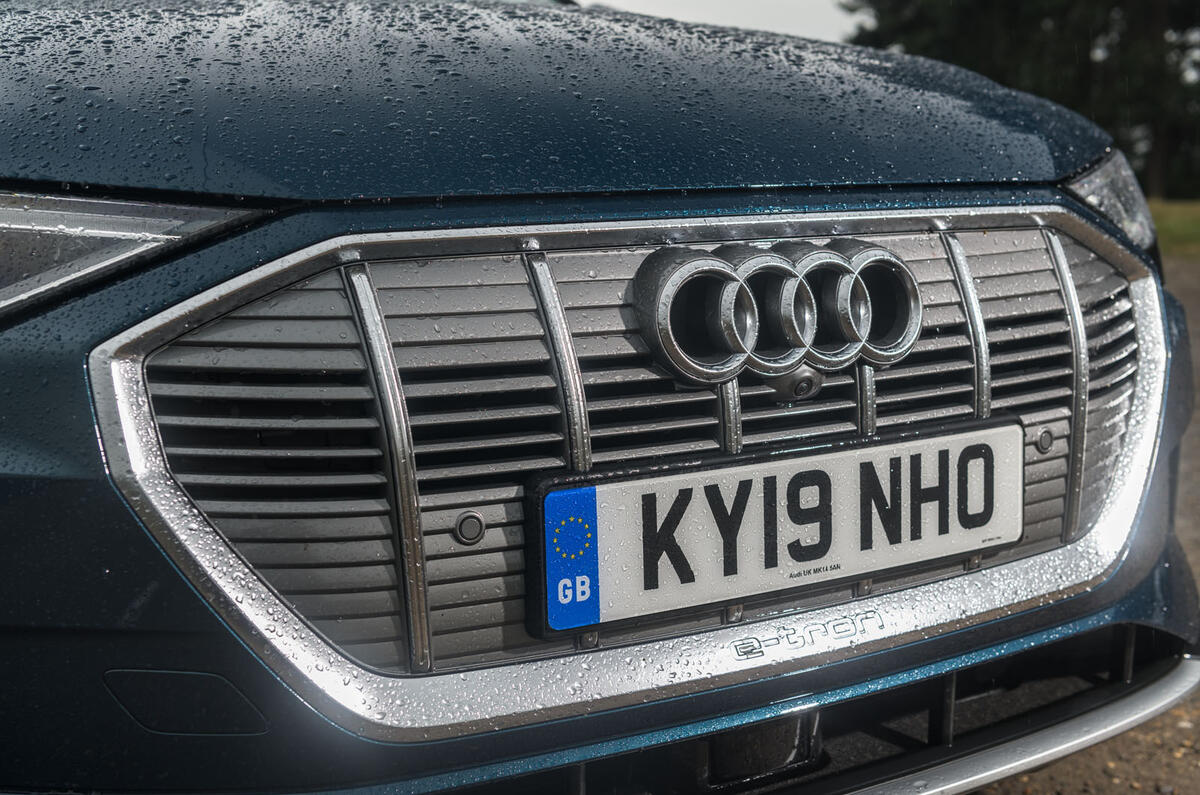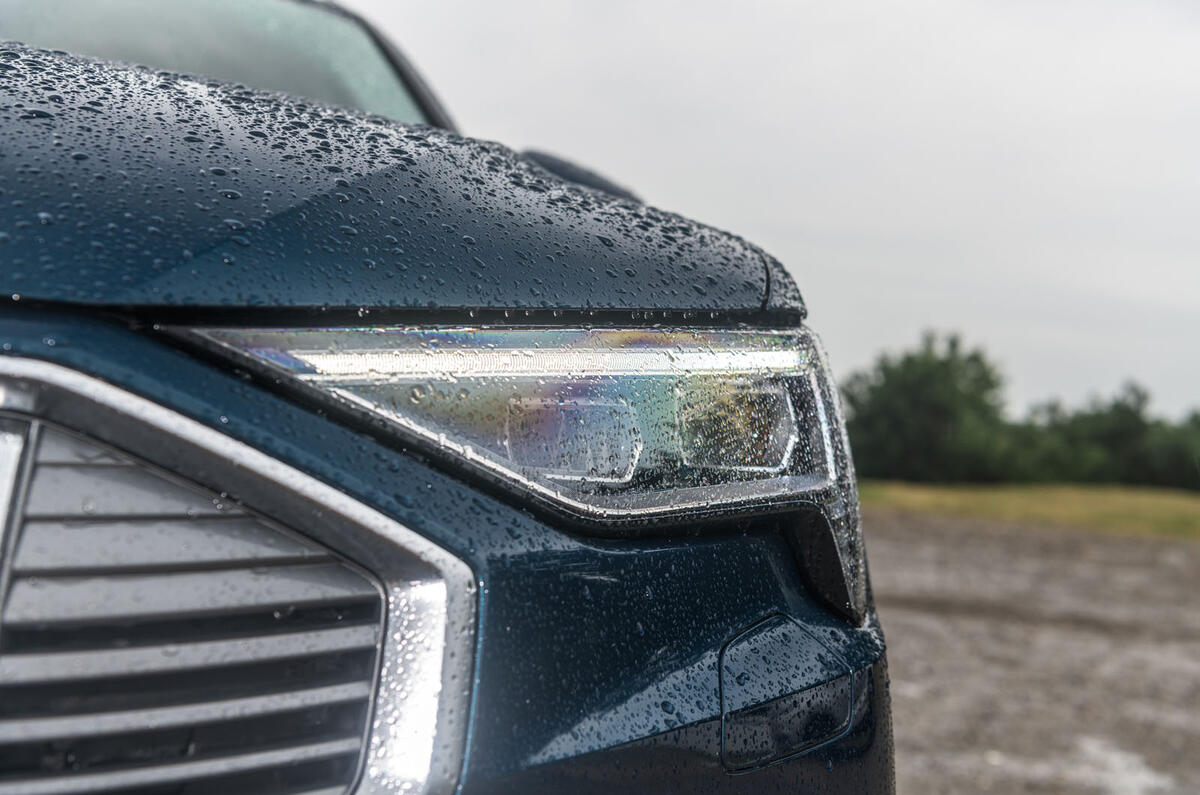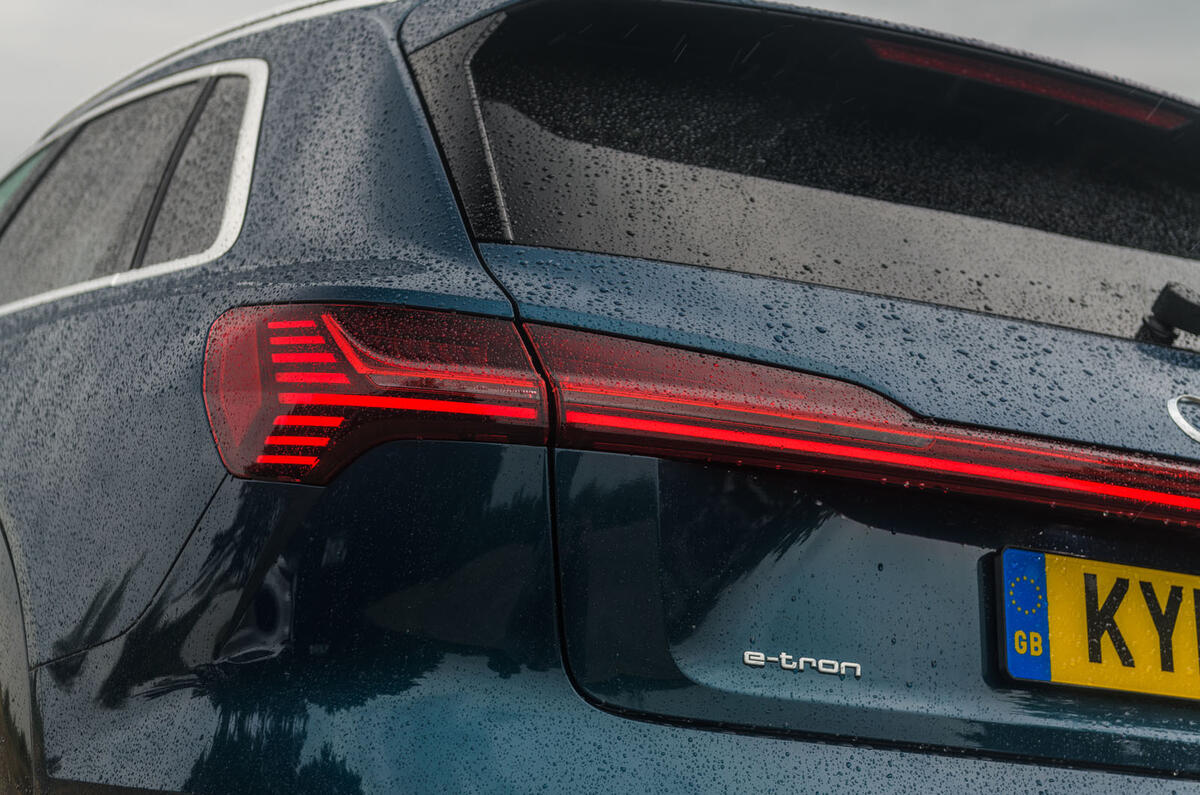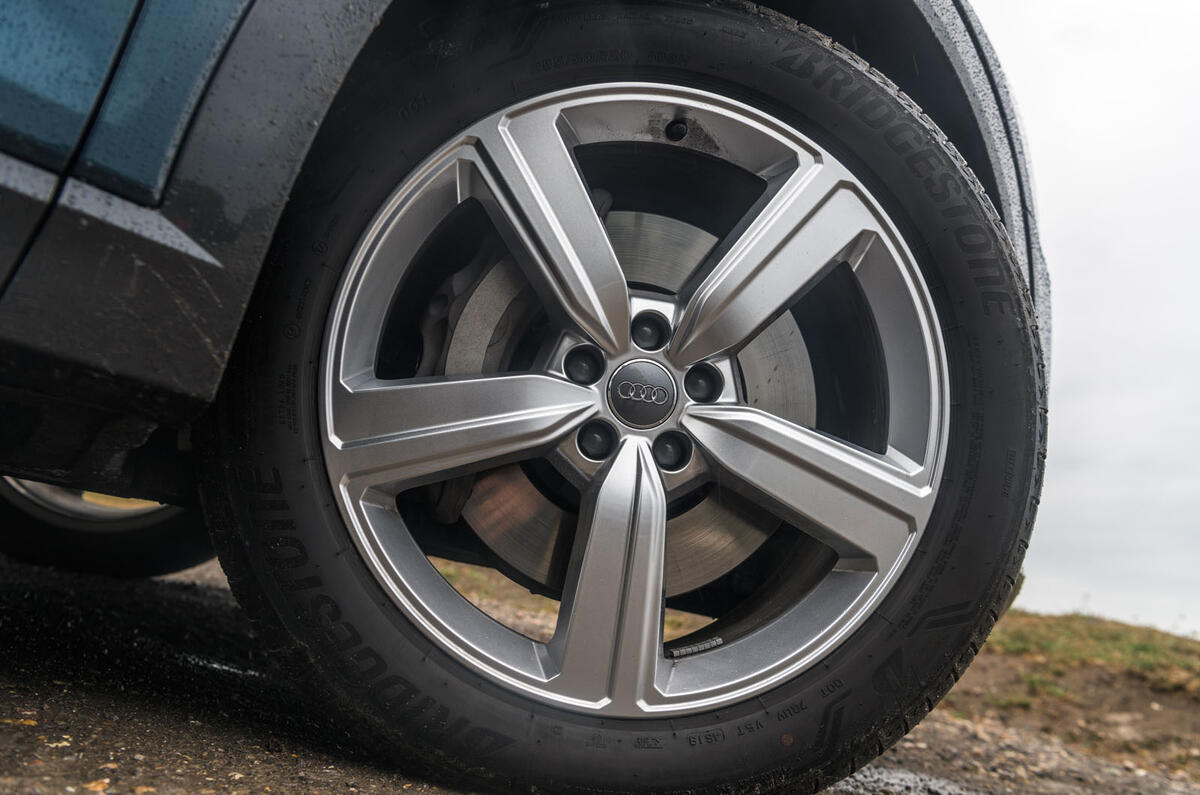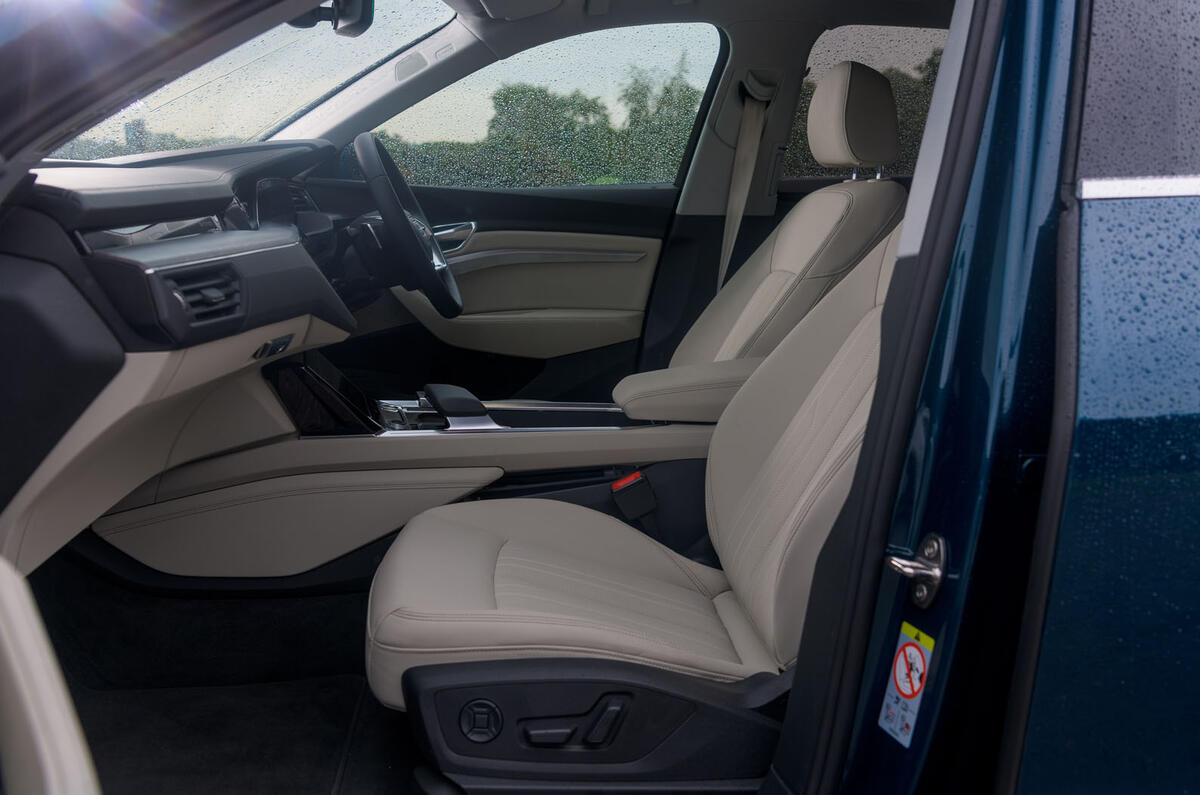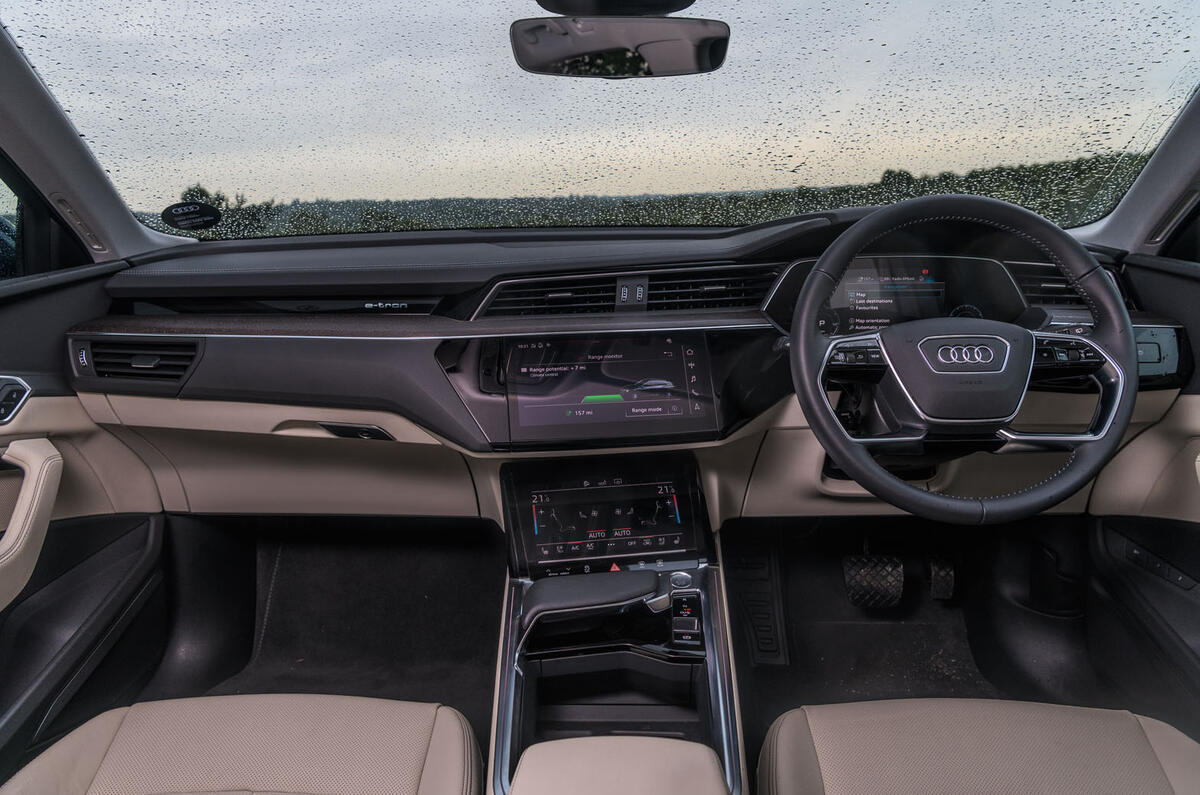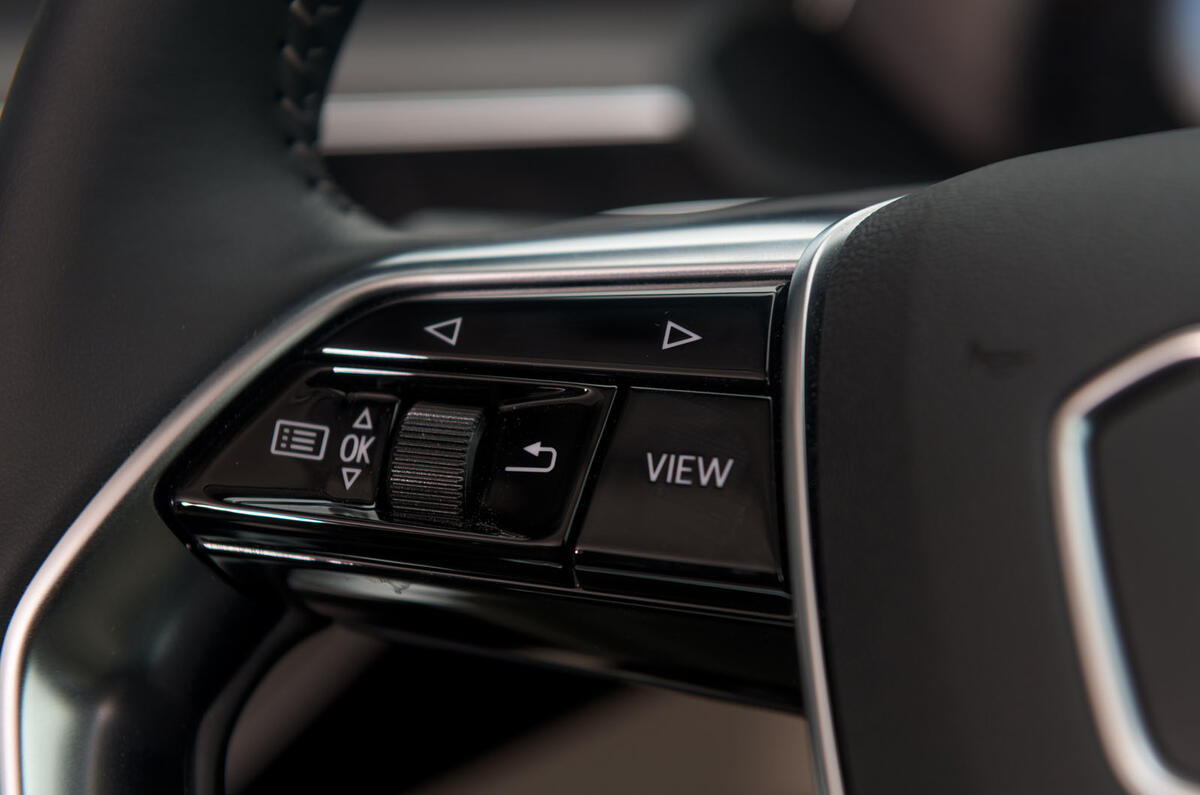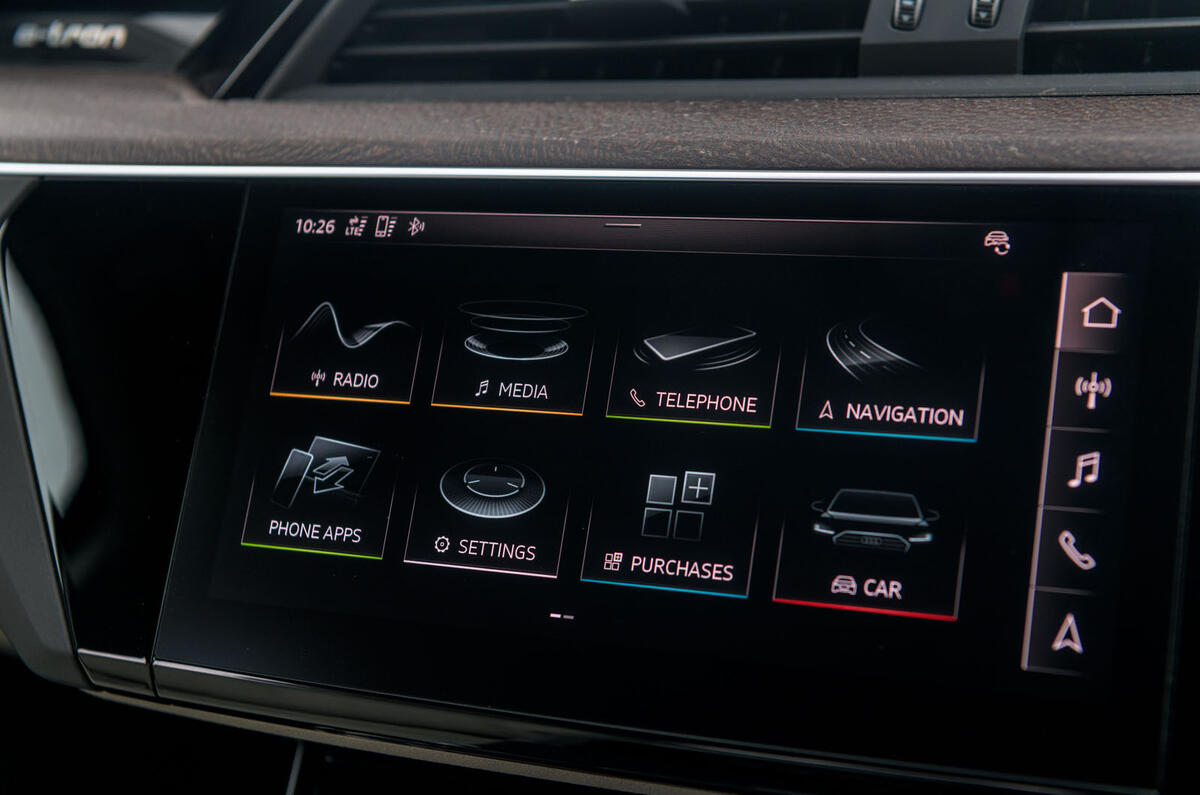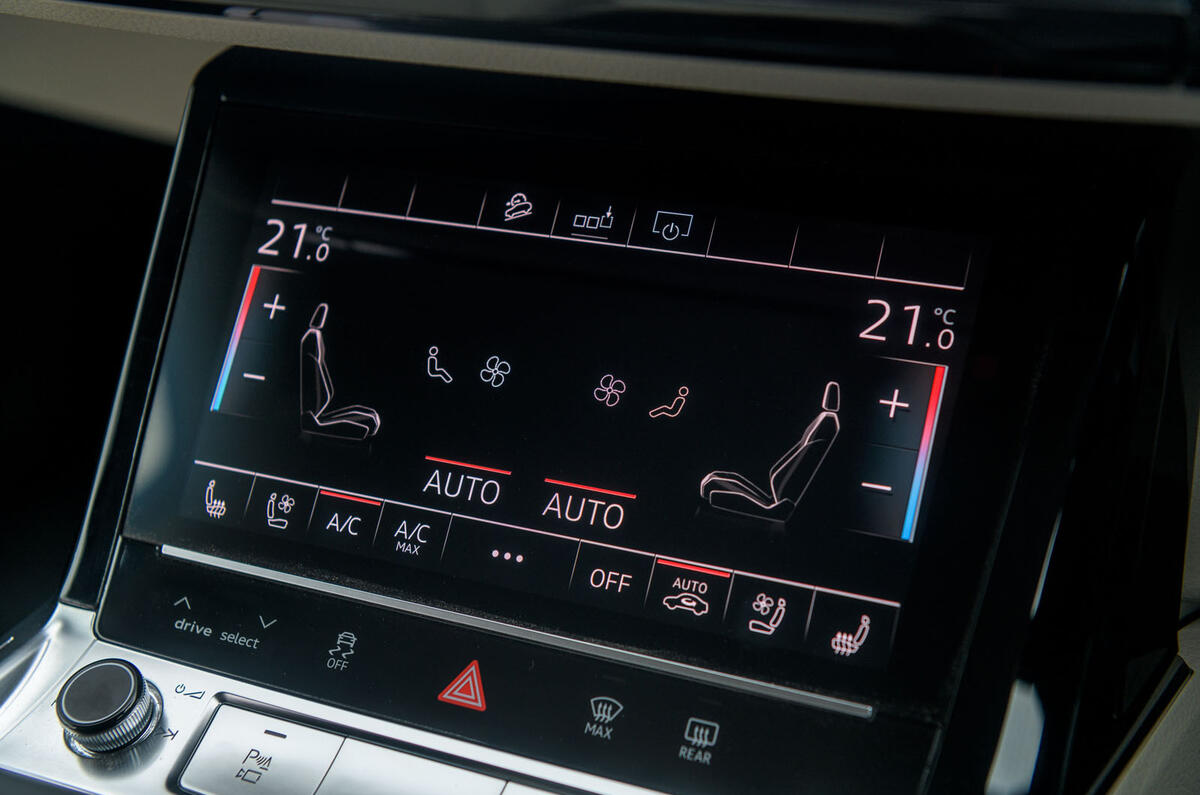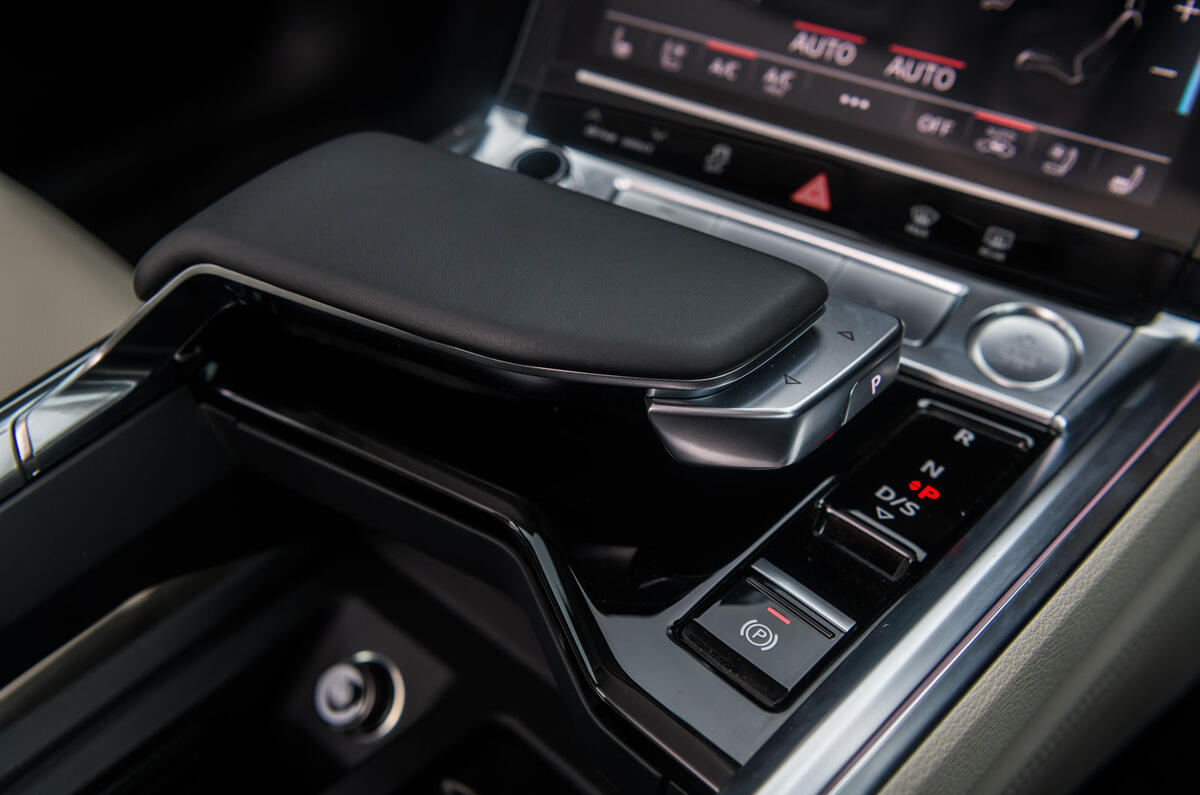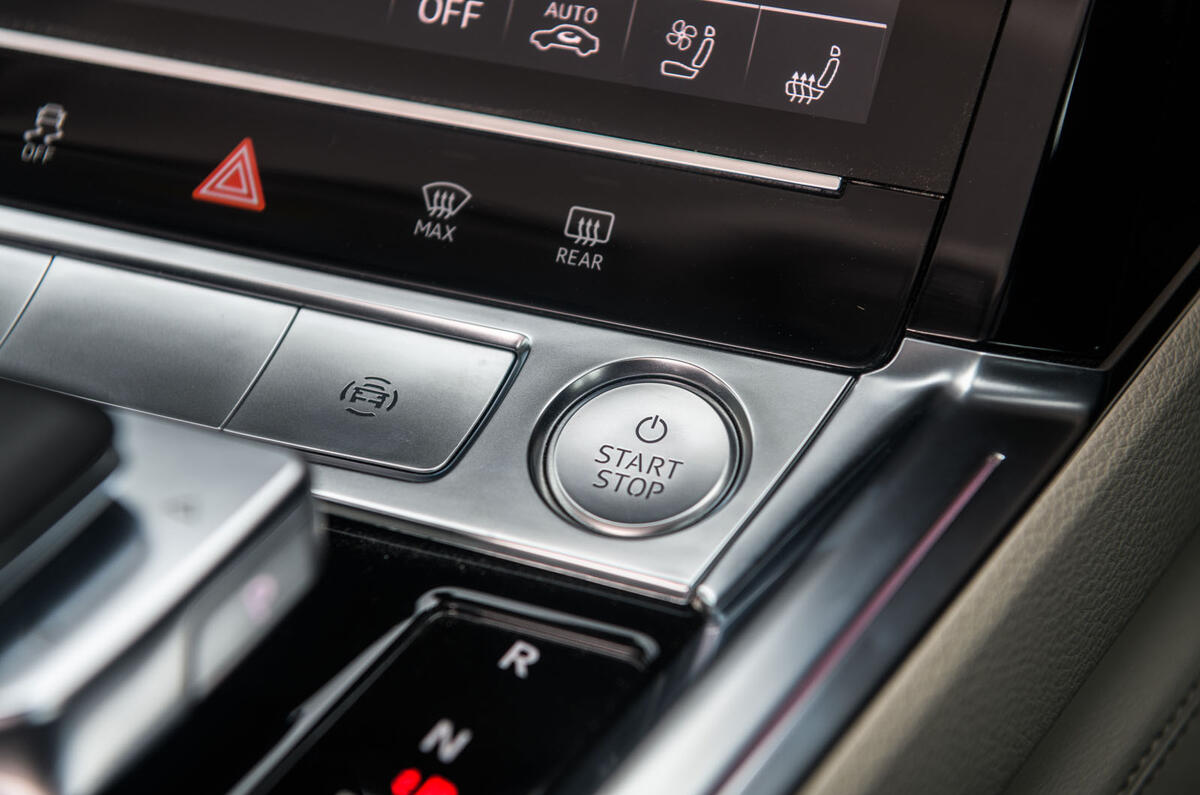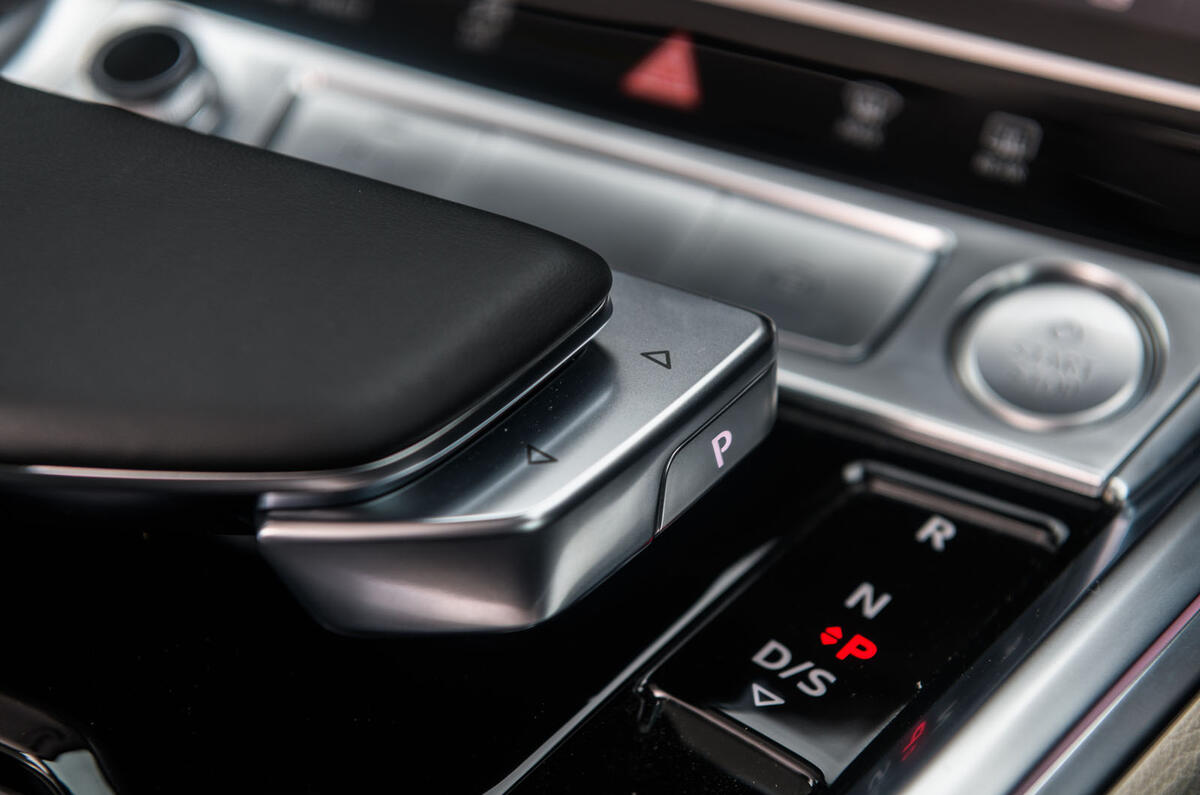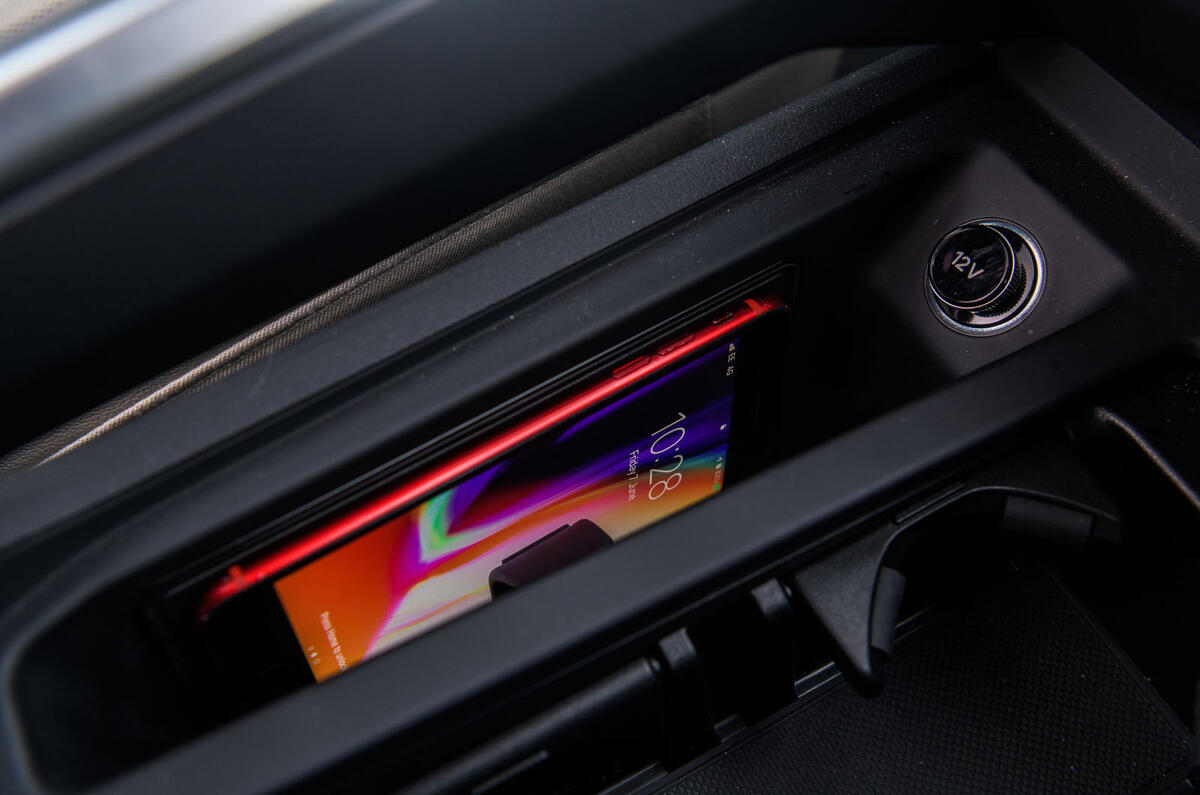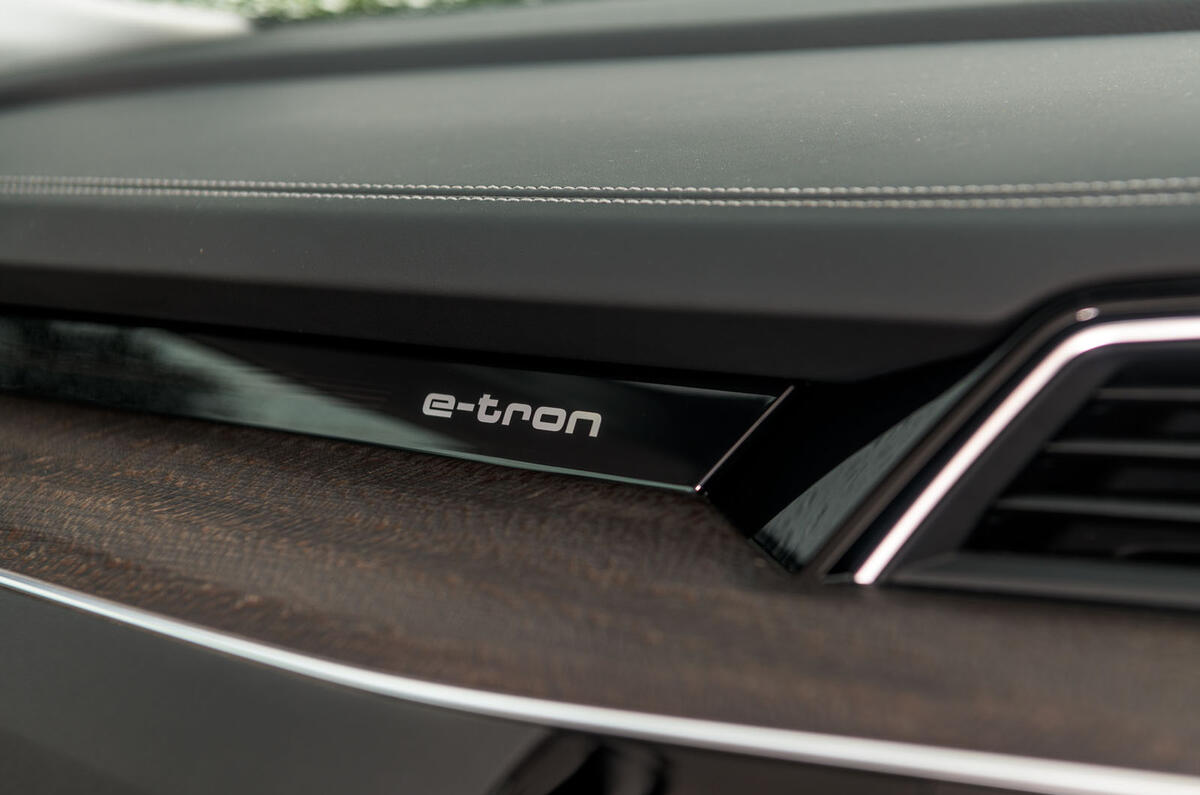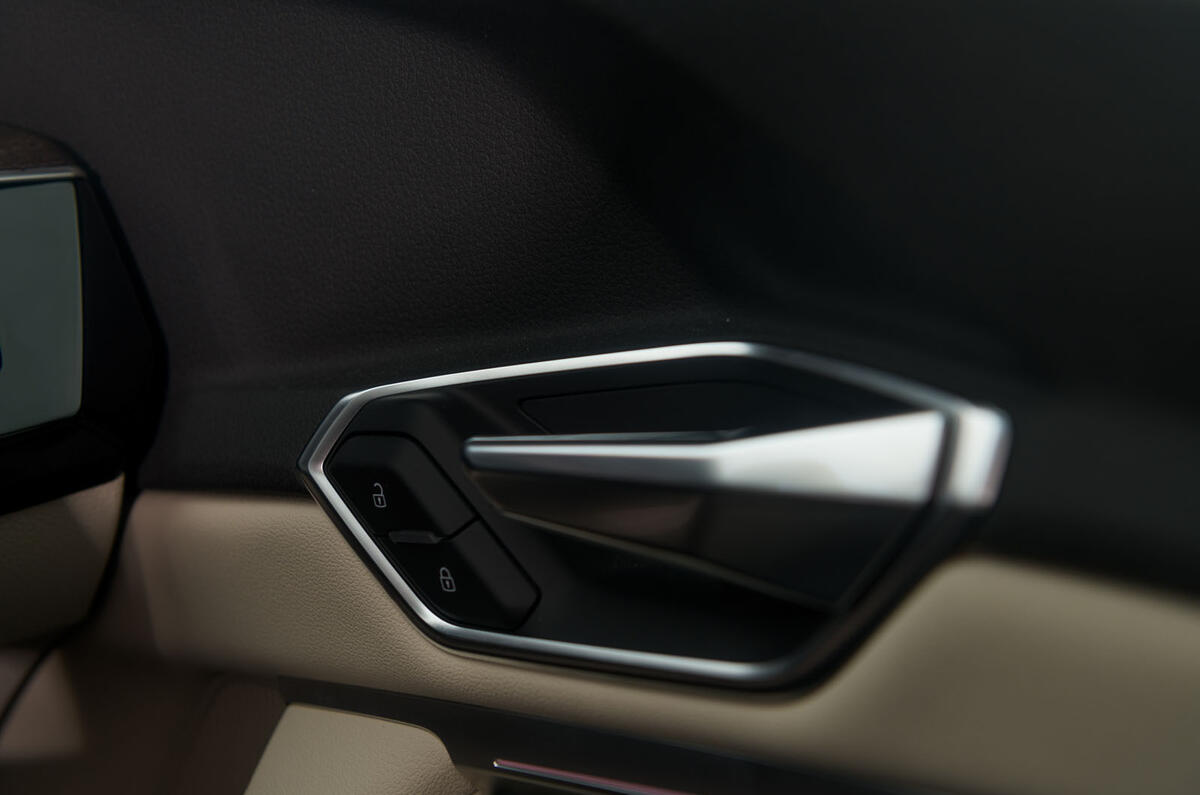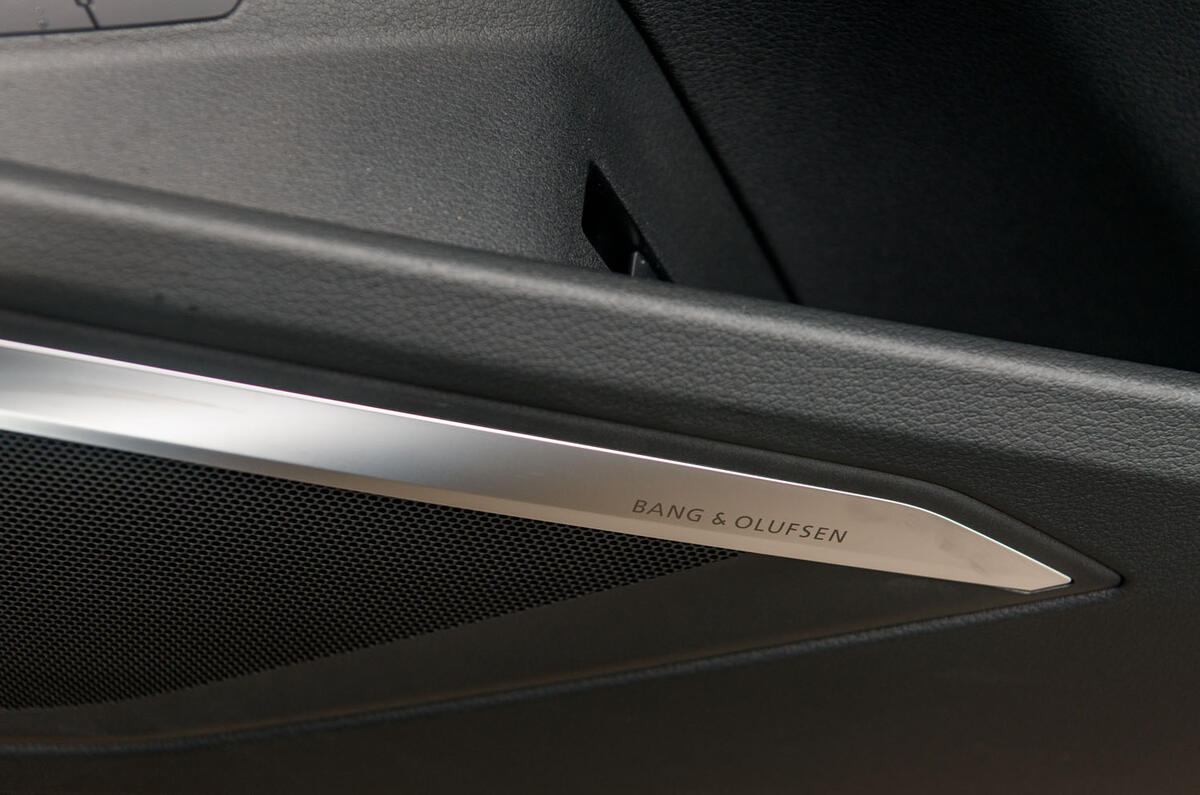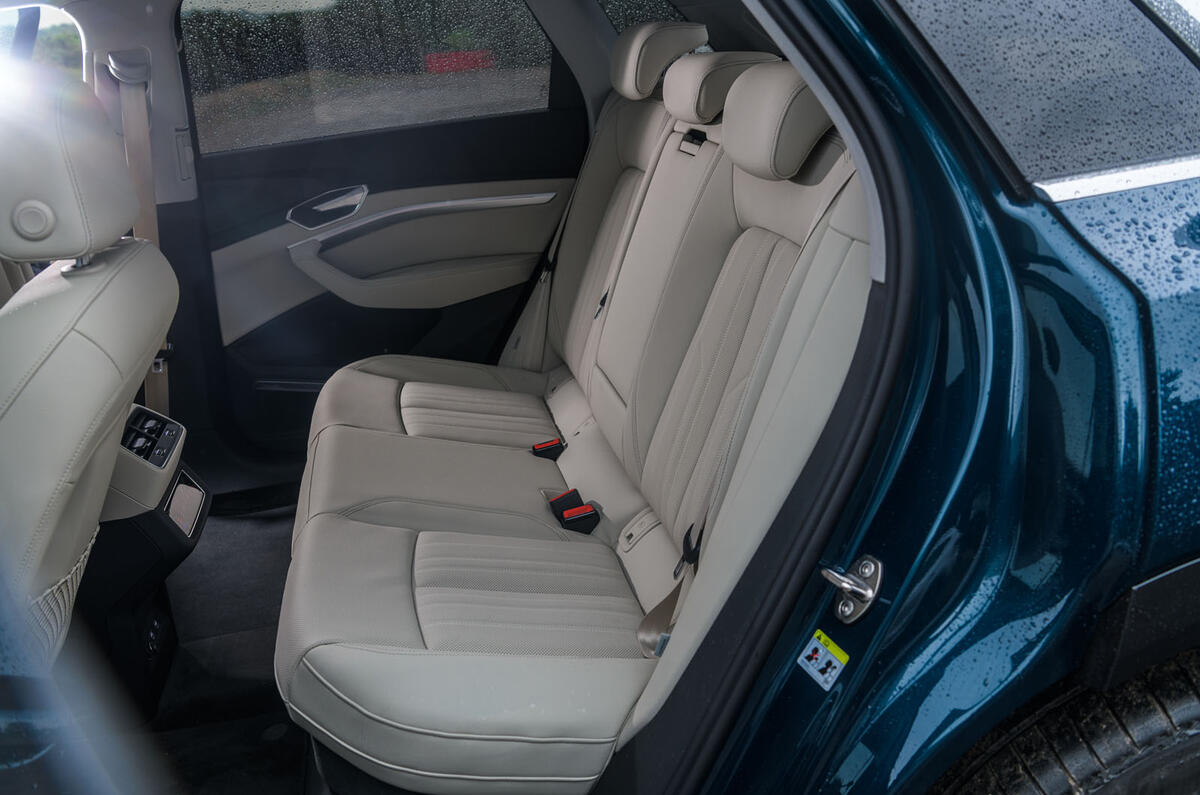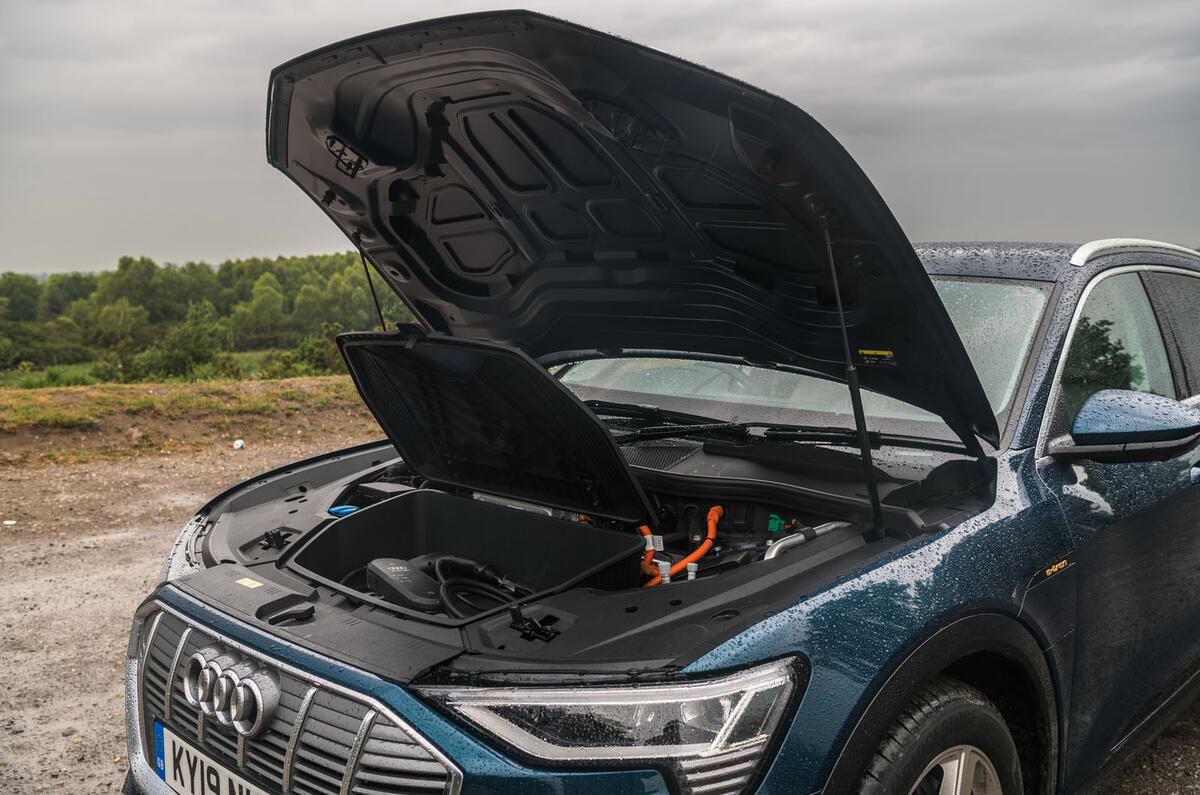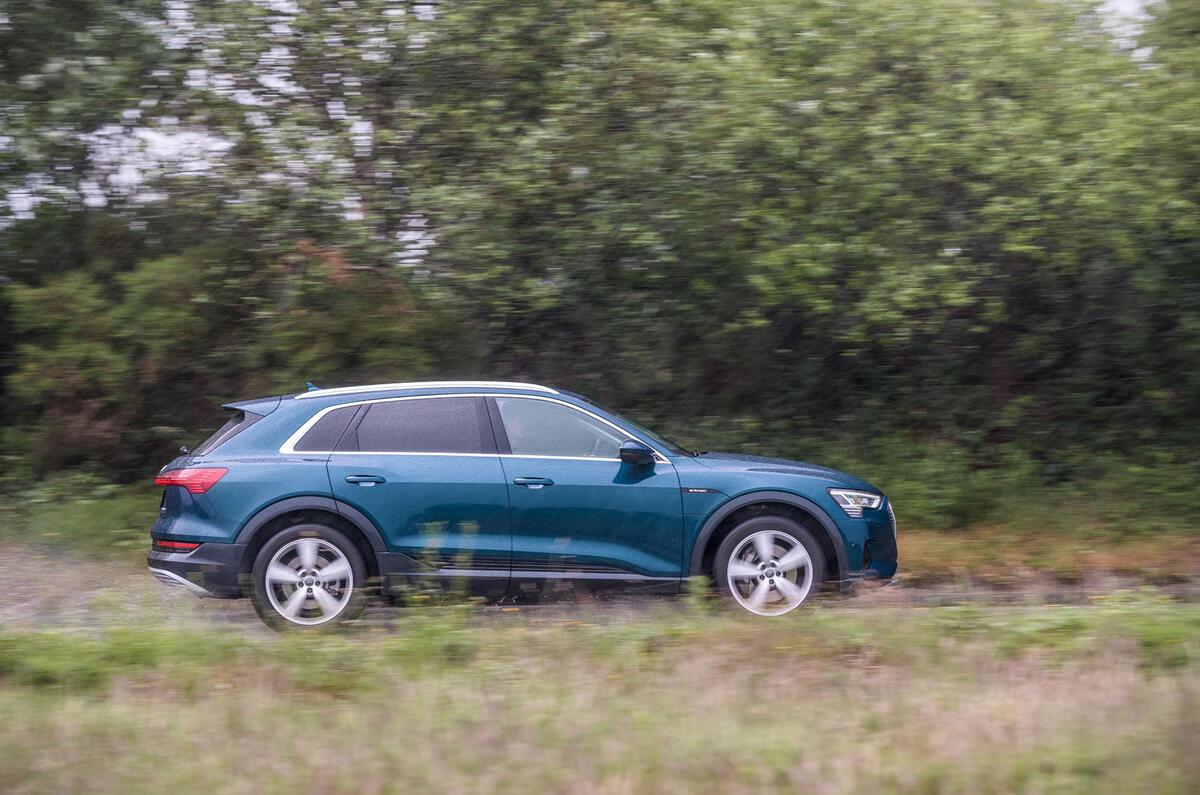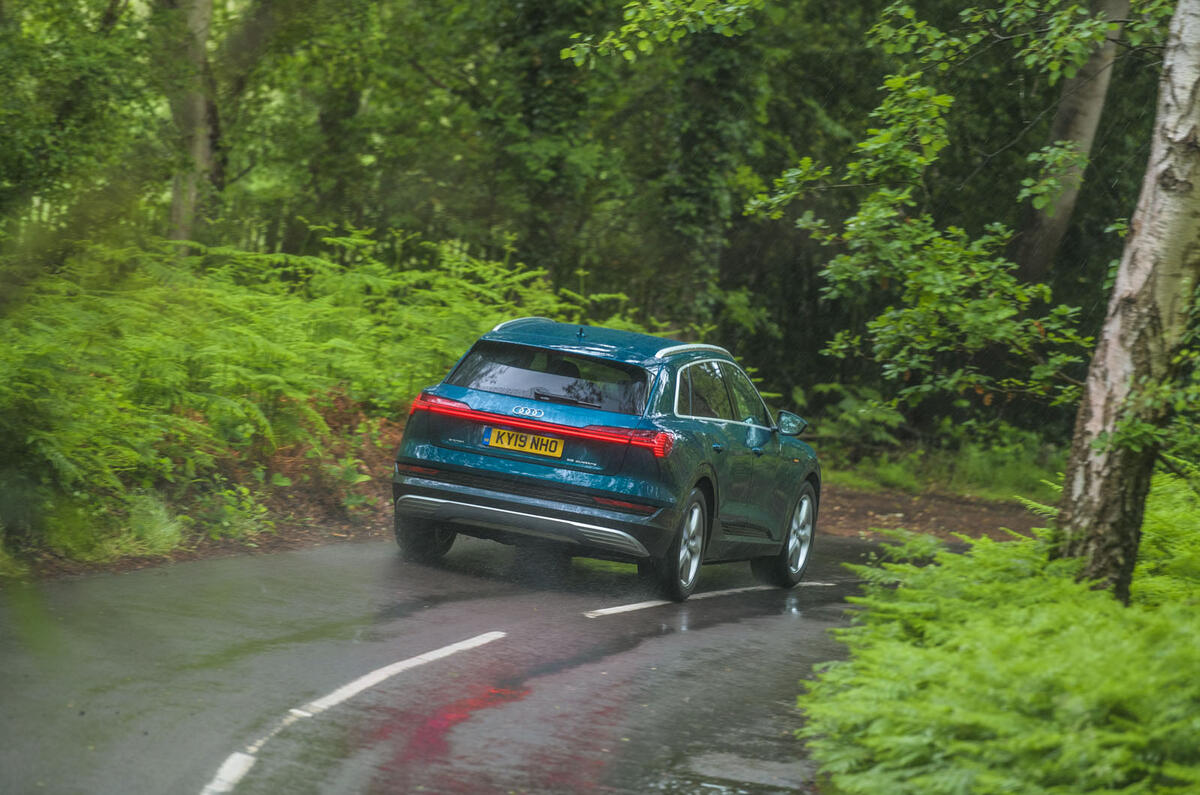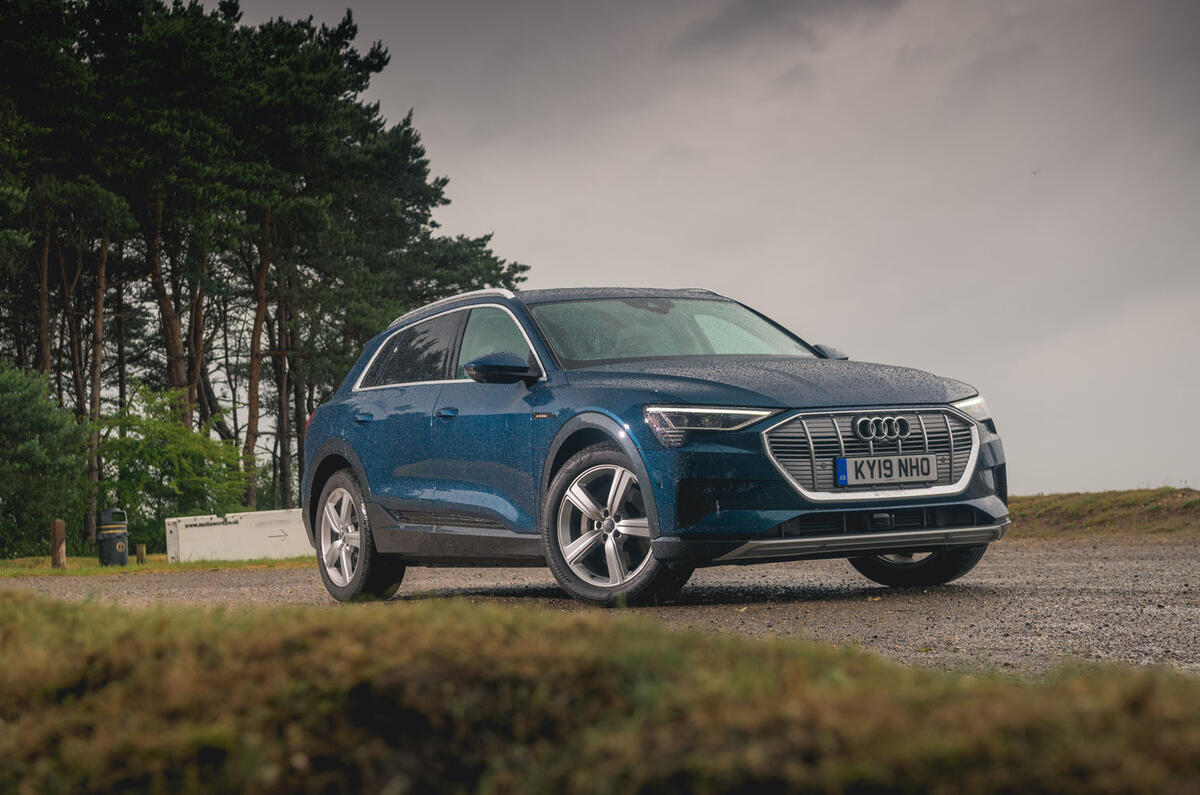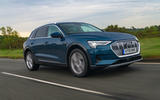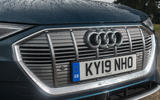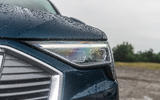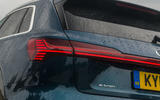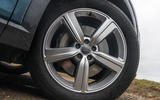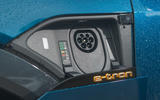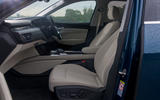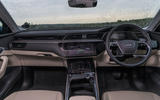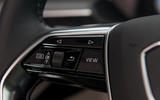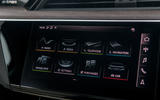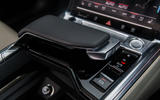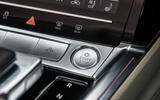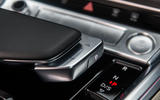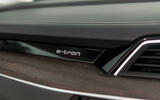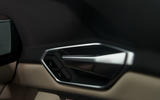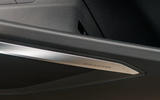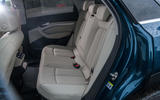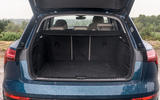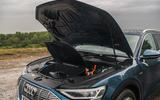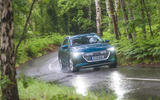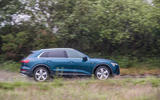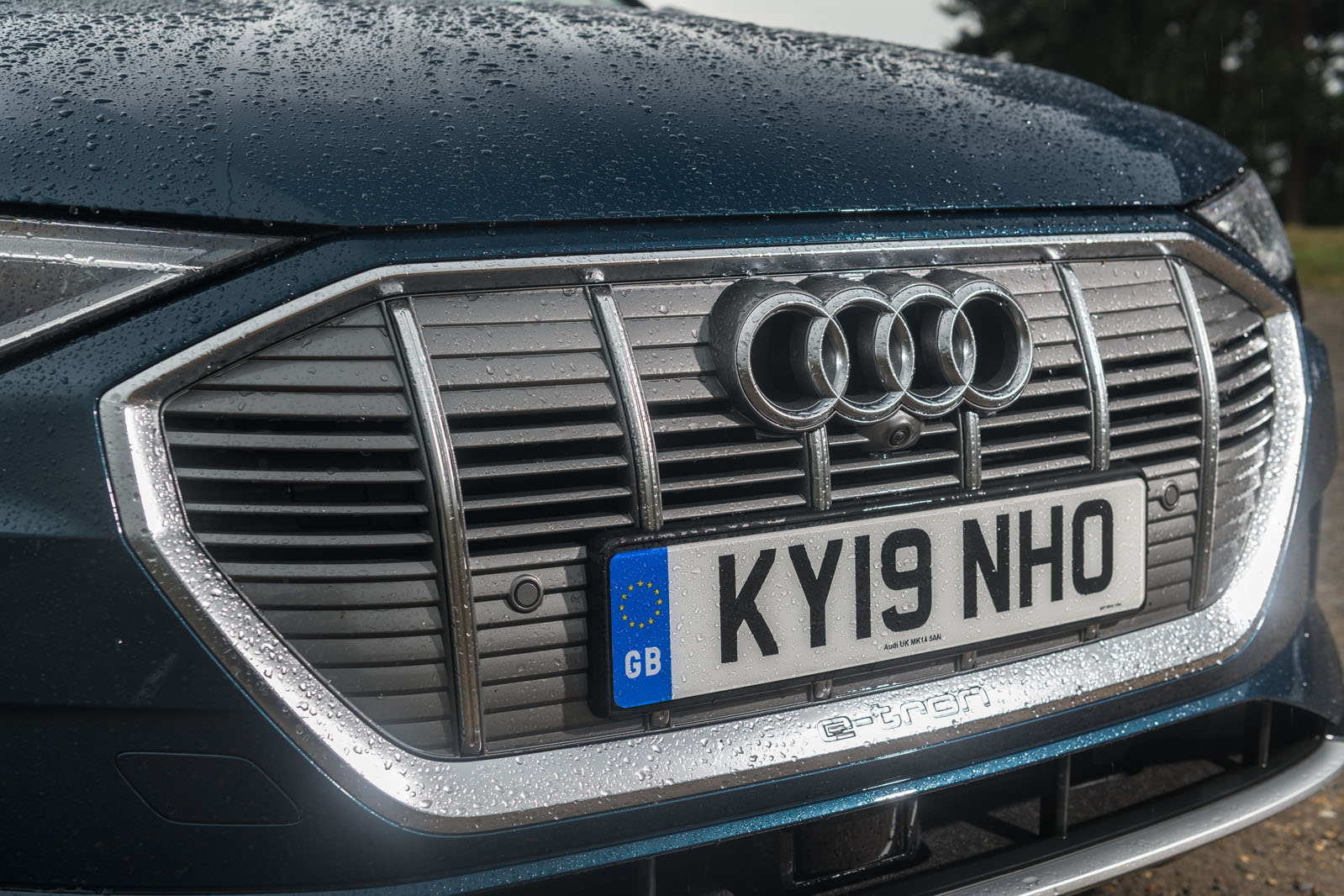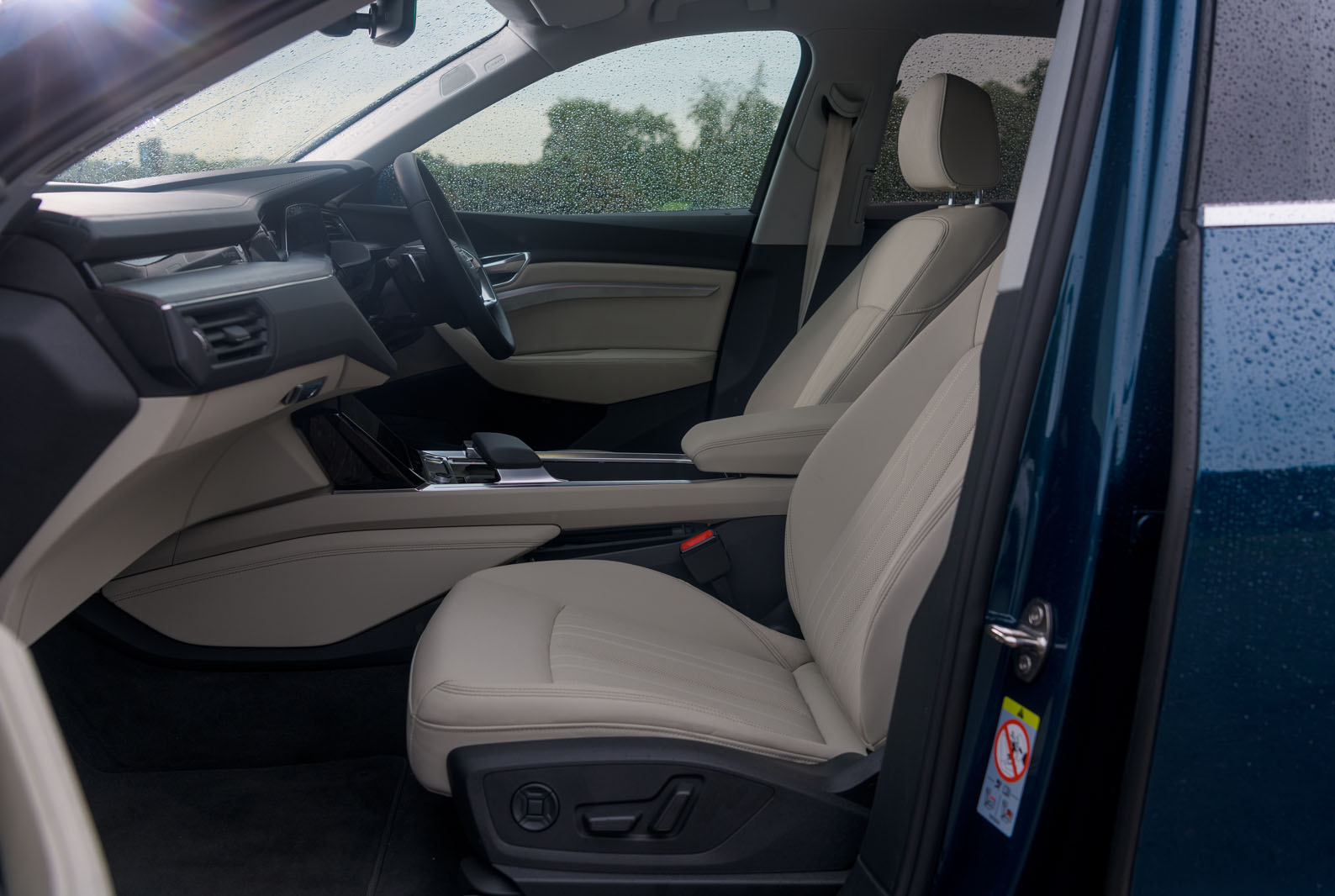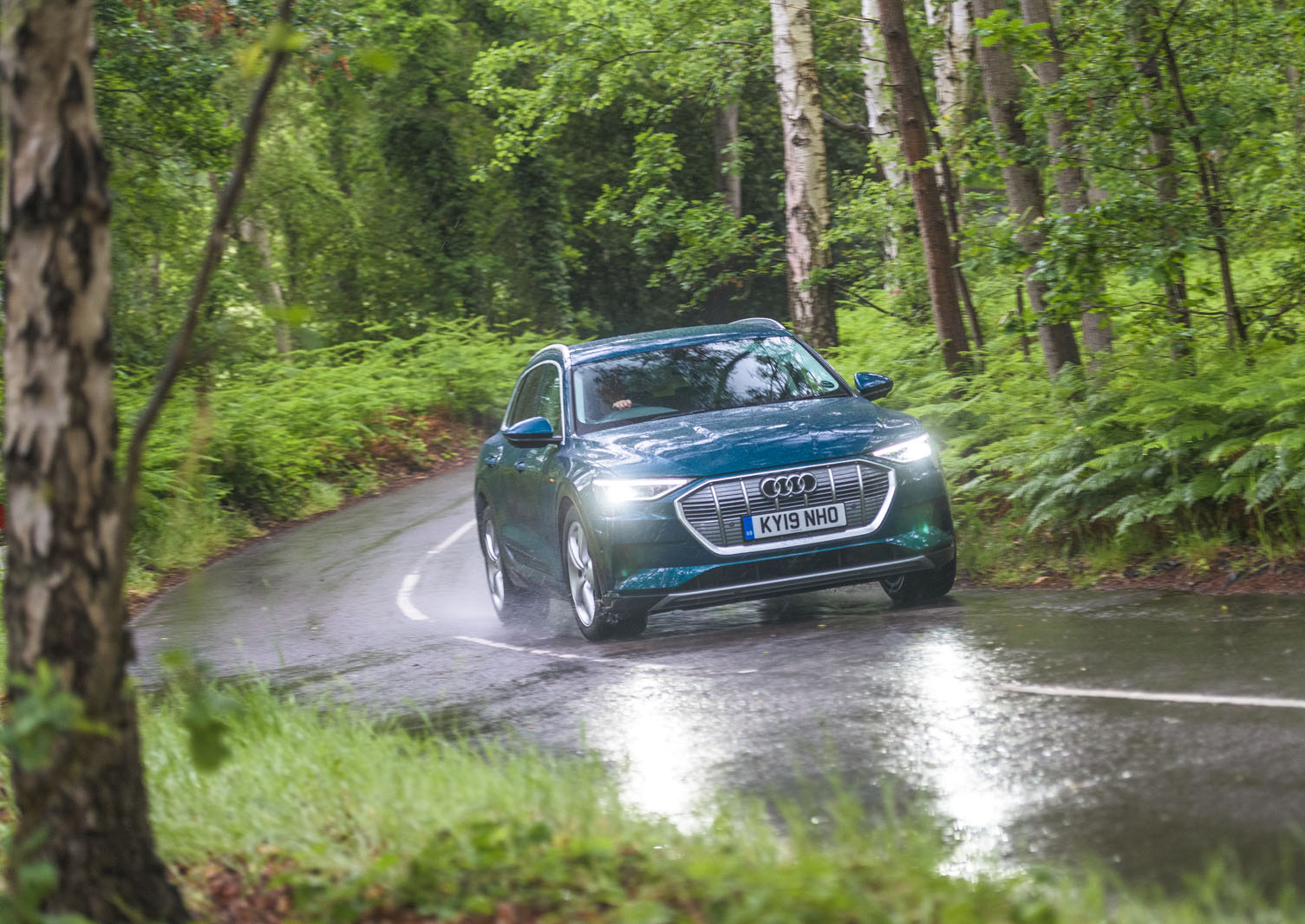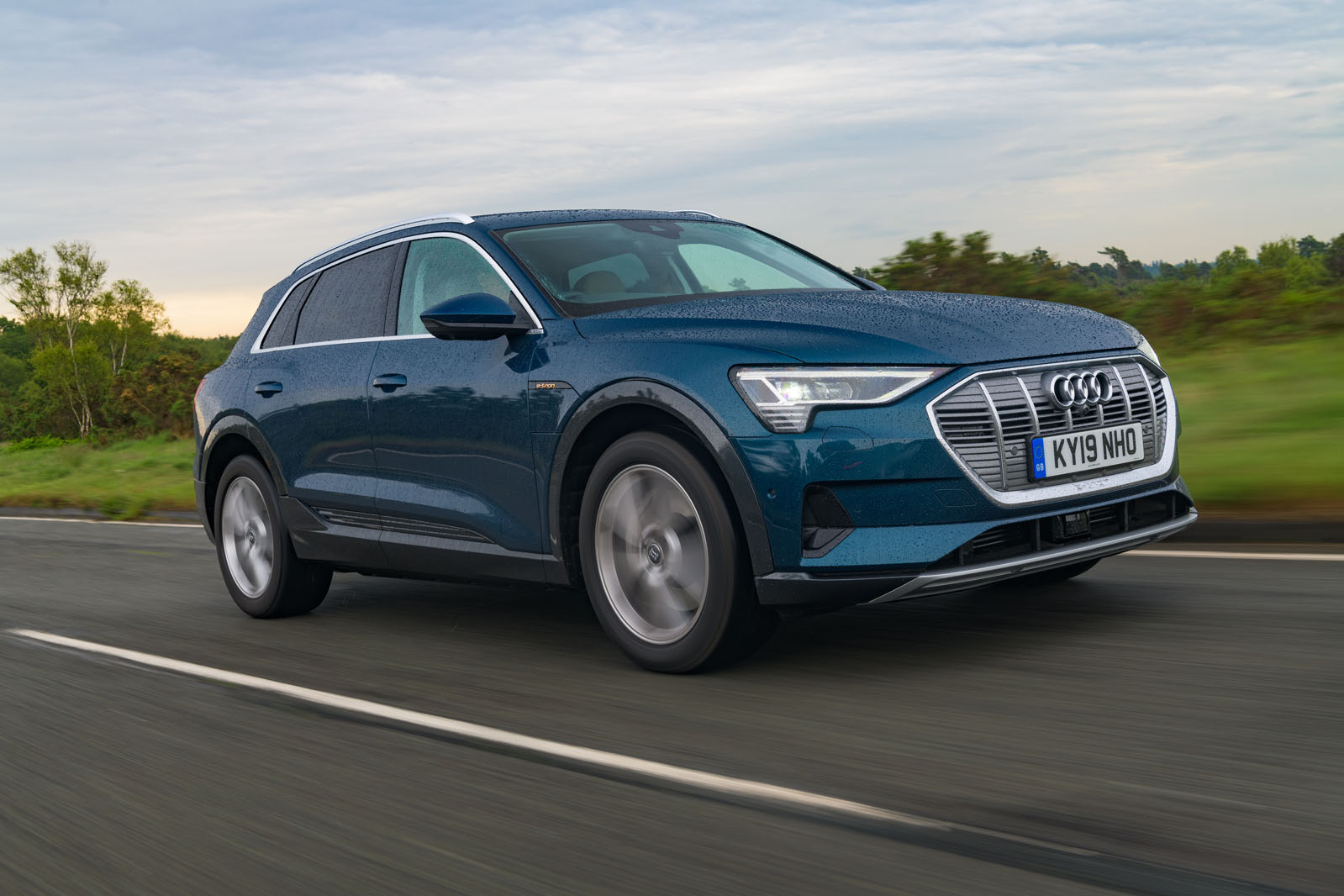In a similar fashion, the design of the E-tron’s cabin doesn’t represent a great departure from the sort of architecture we’ve previously found in models such as the new Audi A6 and Audi Q8. But that’s no bad thing – those cars have all received praise for their levels of perceived quality and sensible ergonomics. And in the E-tron, much of the same applies.
Admittedly, our car doesn’t make quite as much use of the attractive brushed metal surfacing that featured so abundantly on the A6 Avant we tested last year, but what brightwork that’s included is complemented smartly by glossy piano black panelling. Cream upholstery lends an airier feel than some of its more monochrome rangemates, too. The use of plainer soft-touch finishes seems to be wider and more noticeable in the E-tron than in other large Audi models – and so, next to the likes of the Jaguar I-Pace, the E-tron’s cockpit does look slightly ordinary, but not so much that you would criticise it for any lack of premium appeal.
As with nearly all new-generation Audis, the dual screens of the MMI Navigation Plus infotainment suite are housed smartly within the central dashboard fascia and angled towards the driver. The dash-top’s stepped levels then rise above, within which reside a pair of oblong air vents. A not-entirely-convincing open-pore ‘wood’ veneer has been applied to the lower step, perhaps as a nod to the E-tron’s green credentials.
Like all of Audi’s larger new-generation models, the E-tron makes use of the latest MMI Navigation Plus with MMI Touch infotainment hardware. Fitted as standard, this set-up comprises a 10.1in primary screen, which is complemented by a smaller 8.6in display beneath. The graphical sophistication of both is highly impressive and the software the system employs is easy enough to learn your way around.
As before, though, the fact that these screens control virtually all of the E-tron’s features can make for tricky going when on the move. Still, haptic feedback does at least confirm your finger has found a part of the screen that actually does something. Audi’s excellent Virtual Cockpit is also included in the asking price.
The optional Bang & Olufsen sound system fitted to our test car is well worth the £800 asking price. The E-tron’s well-isolated cabin really enables you to enjoy its rich sound quality, and without deafening yourself.
The centre console, meanwhile, houses the smart-looking new gear selector and is operated with a simple prod from your thumb or forefinger. Pleasingly, the task of putting the E-tron into drive or reverse is a simple, tactile experience.
With the E-tron’s wheelbase stretching some 2.9m, passengers who find themselves sat on the rear pews won’t feel as though they have drawn any short straws. There’s plenty of space back there – our tape measure recorded a typical leg room figure of 780mm, with head room coming in at 960mm. That’s more than a Jaguar I-Pace can manage, if only just.
Boot space, meanwhile, comes in at 660 litres, which is also marginally greater than the Jaguar’s.



